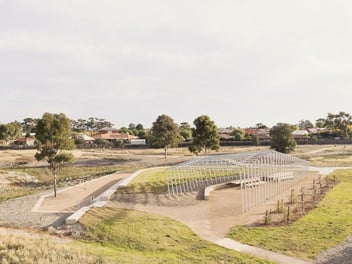Keeping platypus habitats clean
Although the platypus is presumed to be quite a common animal, recent studies have shown that the mammal's numbers are not as widespread as thought. One of Australia’s most beloved species is becoming endangered right before our eyes.
Given their dependence on freshwater systems, habitat destruction and waterway pollution have been threatening the platypus, which is why a nationwide fight to save the iconic monotreme has been under way.
A new project, Water Quality Monitoring in Merri Creek, is now joining that fight, helping to ensure that the Victorian creek continues to be a healthy environment for all aquatic animals — including the platypus.
A partnership between the City of Whittlesea, RMIT and Merri Creek Management Committee, the project is part of Council’s new Whittlesea Water for All strategy. This strategy comes on the heels of the Victorian Government’s announcement of $300,000 to restore key platypus habitat sites.
The state has also listed the platypus population in Victoria as vulnerable.
The strategy covers issues such as the growing risk of flood and drought, and the health of waterways, including Merri Creek, Edgars Creek, Darebin Creek and the Plenty River.
Water Quality Monitoring in Merri Creek involves placing a number of sensors in the water to monitor turbidity levels and protect the health of the waterway and the animals that call it home.
Whittlesea’s Stormwater Harvesting Coordinator Edmond Lascaris said the sensors allow researchers to see how clear or turbid the water is and what effect that has on the water’s inhabitants.
“The network of sensors in Merri Creek will allow us to see the effects of runoff into the creek, which is particularly important for the Whittlesea municipality, with our growth areas and high level of development,” he said.
“This will assist developers to better understand the issue of keeping waterways healthy and enable them to roll out more careful management of construction to minimise runoff into the creek. It will help us identify the extent of these kinds of issues and provide real time reporting.”
The platypus, found in rivers and streams throughout eastern Australia and Tasmania, has been declining in numbers, largely due to hunting, habitat loss and climate change.
“The Merri Creek sub-catchment includes some beautiful spots that are well-loved and enjoyed by many residents,” Lascaris said.
"The creek supports some of northern Melbourne’s largest, most diverse native vegetation.”
Merri Creek is also home to other vulnerable species such as the Growling Grass Frog and the Golden Sun Moth. The project aims to ensure all species have a home in the creek.
Chair Administrator Lydia Wilson believes Whittlesea council is in a unique position in relation to water management and says it is reconsidering its use of water to prepare for more efficient management of the resource.
“Our high-growth areas pose many opportunities to adopt innovative and forward-thinking water management at crucial stages of development,” she said.
“Every year we have more homes and businesses being built. At the same time, science shows that our climate is becoming hotter and drier, and that this will have an impact on the availability of water. There’s also risks of increased waterway pollution and flooding events. This strategy outlines the important step that council will be undertaking around water management for now and in the future.”

